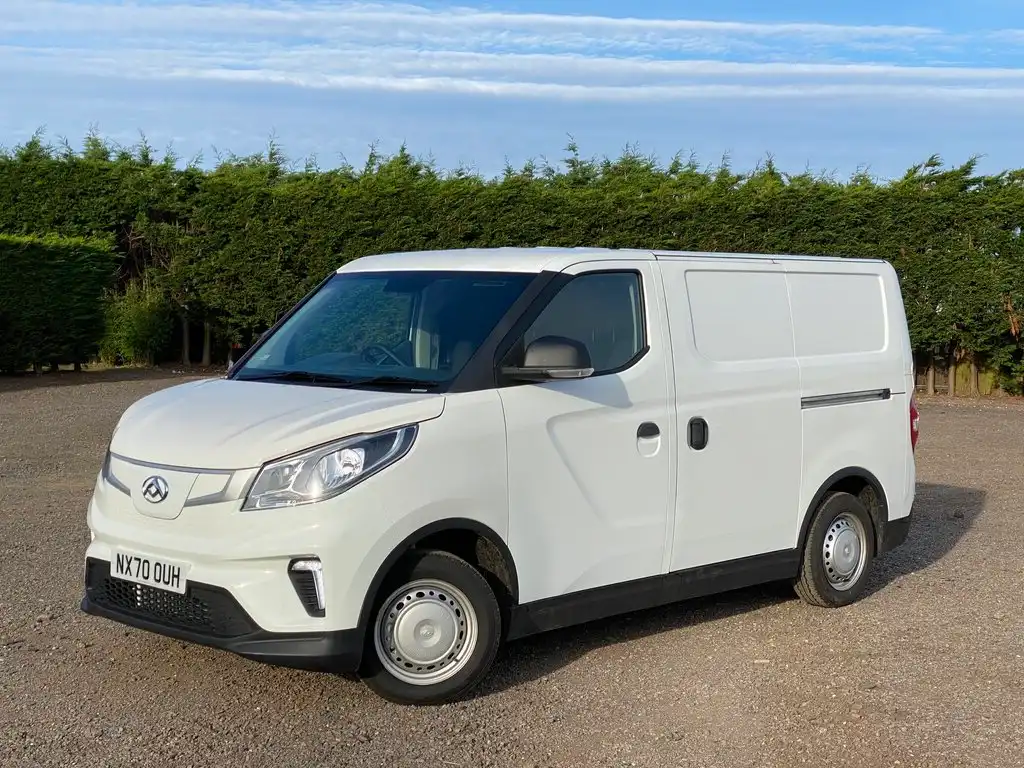
The Maxus eDeliver 3 is the first model from Chinese-owned SAIC Maxus that is a specific battery electric van. Sure, they’ve had other electric vans in the past, but its best not to talk about those (although we will) but the eDeliver 3 was made as a ground-up model for electric only.
Being the first obviously comes with a few problems, but SAIC are no strangers to producing EVs. As one of China’s biggest car manufacturers, they’re more than capable of making an electric van, but the Maxus eDeliver 3 occupies a busy end of the commercial vehicle market.
Electric vans of this size have been around for a long while, since Renault launched their first electric city van – now called the Renault Kangoo E-Tech – and was followed up by the Nissan eNV200 (now called the Nissan Townstar Electric) which has a striking size similarity to the Maxus eDeliver 3.
SAIC took over the LDV name opting to launch with essentially the same model that was around when the company folded years earlier. The LDV V80 ( a diesel van) soon gave rise to the LDV EV80, a reworked electric version of the same van. It enjoyed some moderate success, but it wasn’t very good at all. New models meant new names. LDV became Maxus (a previous model name, used by LDV) and the Deliver 9 diesel van and an accompanying Maxus eDeliver 9 were launched.
The came the Maxus eDeliver 3, the first electric only model, designed to only be an EV. More have followed since, with the Maxus eDeliver 7 announced in early 2023 and the Maxus eDeliver 5 in late 2023. There’s also a pick-up truck called the Maxus T90EV.
The Maxus eDeliver 3 is a fully electric city van. It is something of a crossover between a small and medium-sized van.
The Maxus eDeliver 3 is available in two wheelbase lengths but there's just one body size. That's because the longer wheelbase is only used on the chassis cab version of the van.
Panel vans are only available as a short-wheelbase model. There is also only the option of a standard height roof – so no extra capacity from a high roof either.
A high roof probably wouldn’t help in the looks department, as it looks like a fairly unusual van. Being somewhere between small van and medium van, it’s filling a gap others aren’t. It is not quite as long as a medium van, but it is a little higher. This makes it look a bit… we’ll say dumpy, so as not to be rude.
For more on the Maxus eDeliver 3 dimensions read the complete guide to all of its sizes.
There are two battery sizes with a range of up to 213 miles, and there’s just one electric motor with a peak power of 90kW. More on all of those points shortly.
Because of its shape it’s not really similar to anything, but it does mean it straddles two camps. If you think a small van is what you need, its competition are the likes of the Stellantis-made models that include the Citroen e-Berlingo, Fiat E-Doblo, Peugeot e-Partner, Vauxhall Combo Electric and Toyota Proace City Electric.
There’s also the Renault Kangoo E-Tech, Mercedes-Benz eCitan and Nissan Townstar Electric that are that size too. If you’re thinking you’ll need a larger van, then the Maxus eDeliver 3 competes with the likes of mid-sized models like the Ford E-Transit Custom, Renault Trafic E-Tech and Mercedes-Benz eVito.
Once again there is also a batch of Stellantis ProOne vans that include the Citroen e-Dispatch, Fiat E-Scudo, Peugeot e-Expert, Toyota Proace Electric and Vauxhall Vivaro Electric.
It is a very very congested space.
The range of the Maxus eDeliver 3 will depend upon which battery pack there is in the van. The eDeliver 3 has a choice of two, a 50kWh battery or a smaller 35kWh option. The 50kWh battery has a claimed range of 151 miles on the combined cycle and up to 213 miles on the WLTP City test cycle. The smaller 35kWh battery has a range of 99 miles on the WLTP Combined and 141 miles on the city test.
Consumption rates are said to be 24.3kWh/100km for the smaller battery and 23.6kWh/100km for the larger model.
In the real world, the Maxus eDeliver 3 is actually pretty good at staying true to those figures. We’ve actually found that with the bigger battery we have been able to easily match the claimed combined range of 151 miles, and occasionally surpass it depending on the roads we’ve been using. It didn’t even take much thinking about to match those figures either. Drive normally, and you’ll be rewarded with pretty consistently good consumption figures.
The Maxus eDeliver 3 supports fast charging of up to 50kW.
That’s not particularly quick, but it is faster than the 22kW you’d get from a three phase supply or the 7kW you’d get from a domestic supply.
That means its battery can be charged from 0-80% in just 45 minutes using DC fast charging, while charging time on a regular AC supply will take six hours for the small battery and 8 hours for the larger battery.
Given that it’s so accurate at delivering close to its expected mileage range, you’d think that the eDeliver 3 might have a fairly conservative motor. You’d be wrong.
The eDeliver 3 has a motor that delivers up to 90kW of peak power (40kW continuous) and 255Nm of peak torque. That’s the equivalent of 121hp, which is at the top end for what you’d find in most other small vans. It’s also the exact same amount you get in a Mercedes-Benz eCitan and Renault Kangoo E-Tech – while delivering 10Nm more torque than the pair.
Speed is limited to 75mph for the vans – 56mph for the chassis cab. There’s also a best 0-62mph acceleration time of 11 seconds for the smaller battery van and 12 seconds for the larger battery model.